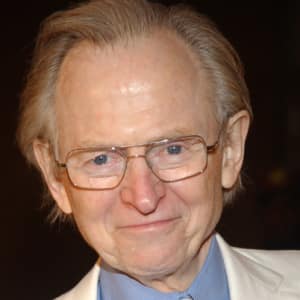
Tom Wolfe
Tom Wolfe was a journalist and best-selling author well known as a proponent of the New Journalism, using fiction-writing techniques in journalism.
Who Was Tom Wolfe?
Tom Wolfe was a best-selling author and journalist, well known as a proponent of the New Journalism, using fiction-writing techniques in journalism. After earning a doctorate from Yale, Wolfe worked for newspapers before writing best-selling books such as The Electric Kool-Aid Acid Test (1968), The Right Stuff (1979) and his 1987 novel about urban greed and corruption, The Bonfire of the Vanities. On May 14, 2018 Wolfe died at the age of 87 after being admitted to the hospital for an infection.
Newspaper Journalist
After college, Wolfe plunged into a decade-long career as a newspaper reporter, first with the Springfield Union in Massachusetts, and then The Washington Post. There he earned the Washington Newspaper Guild Award for Foreign News Reporting for his coverage of the Cuban Revolution in 1961. Like many ambitious young journalists, Wolfe wanted to test himself in New York. In 1962, he signed on with The New York Herald Tribune and, with reporter Jimmy Breslin, wrote for the paper's Sunday supplement, which later was spun off as New York Magazine.
The New Journalism
During the New York newspaper strike of 1962, Tom Wolfe proposed an article on the Southern California hot-rod culture for Esquire magazine. He struggled with the angle and finally sent his editor a letter explaining his ideas, dispensing with traditional journalism conventions and describing the entire scene in a personal voice. The editor was so impressed that he removed the letter's salutation and published it in its entirety. From this, Wolfe developed his own writing style, which became known as "the New Journalism." In this style, writers experimented with a variety of literary techniques, combining journalistic accuracy with a novelist's eye for description.
Tom Wolfe's Books
'The Kandy-Kolored Tangerine-Flake Streamline Baby'
At this point, Wolfe began transitioning from beat reporter to social commentator. In 1964 he wrote "The Last American Hero," about NASCAR driver Junior Johnson. In this article, he introduced the term "good ol' boy." The technique of creating new catch phrases such as "statusphere," "the right stuff," "radical chic," and "the Me Decade" became a trademark of Wolfe's. In 1965 a collection of Wolfe's articles were published under the title The Kandy-Kolored Tangerine-Flake Streamline Baby and quickly became a best seller.
'The Electric Kool-Aid Acid Test'
In the 1960s, Wolfe traveled the country, recording the social changes in America. Essays appeared regularly in Esquire, New York Magazine and Harper's. In 1968 two of his books were published the same day: The Pump House Gang, a collection of essays, and The Electric Kool-Aid Acid Test, a novelistic look at the counterculture, centering on the LSD-influenced antics of Ken Kesey and his Merry Pranksters on their coast-to-coast bus trip.
'The Right Stuff,' 'The Bonfire of the Vanities'
Besides being a journalist and novelist, Wolfe was also a provocateur, challenging prevailing notions. His book Radical Chic & Mau-Mauing the Flak Catchers (1970) is a stinging account of a party given by Leonard Bernstein to raise money for the Black Panther Party and of the practice of using racial intimidation to gain government welfare funds. In addition to his own efforts in New Journalism, Wolfe edited a collection of articles by other authors, such as Norman Mailer, Truman Capote, Hunter S. Thompson and Joan Didion, in a book entitled The New Journalism. In 1979 Wolfe published The Right Stuff, an account of America's first astronauts. The book was adapted into a successful feature film in 1983. In 1985 Wolfe published The Bonfire of the Vanities, a portrayal of the money-obsessed, sex-seeking, power-hungry residents of urban New York.
Wolfe had staked his career on the idea that all human beings are controlled by a quest for status. In his three novels, The Bonfire of the Vanities, A Man in Full and I Am Charlotte Simmons, he explores male power-jockeying by individuals who suffer from feelings of inadequacy or inflated egos, sometimes alternating between both. Considered a political conservative because of his attacks on liberal individuals and causes, Wolfe saw his role in the tradition of John Steinbeck, Emile Zola or Charles Dickens, documenting contemporary society.
Clothing
Wolfe not only had a flair for words but also fashion, which he self-described as "Neo-pretentious." He was easily distinguishable walking down the streets of Manhattan: "a tall, slender, blue-eyed, still-boyish-looking man in his spotless three-piece vanilla bespoke suit, pinstriped silk shirt with a starched white high collar, bright handkerchief peeking from his breast pocket, watch on a fob, faux spats and white shoes," as described by the New York Times.
Early Life
Tom Wolfe was born on March 2, 1931 (some sources say 1930) and raised in Richmond, Virginia, in a middle-class family. His father, Thomas Kennerly Wolfe Sr., was an agricultural scientist, and his mother, Louise, a landscape designer. Both parents placed a high value on education and encouraged young Tom to pursue his early literary interests while he attended St. Christopher's School in Richmond. Wolfe turned down an offer to attend Princeton University and instead enrolled at Washington and Lee University, graduating in 1951 with a B.A. in English. Briefly, he pursued a career in baseball and even tried out for the New York Giants, but was cut from the team. He then received his Ph.D. in American Studies at Yale University.



